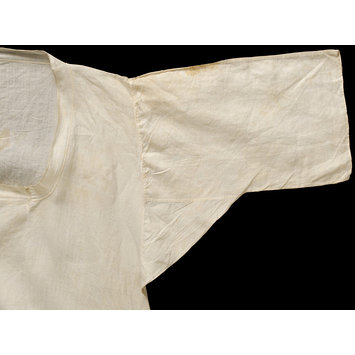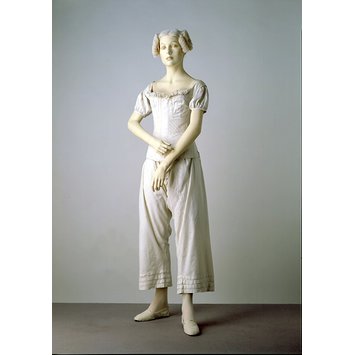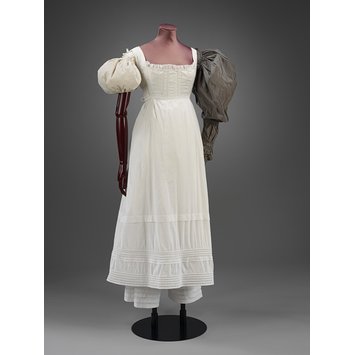Who Am I? Where Do I Want to Be?
Two hard questions to answer, but ones which I need to face up to and then answer.
Who Am I?
So, who am I?
On the surface, this is an easy question to answer - I'm me, I'm >>name<<, and so on.
Or do I define myself by others - I'm the spouse of, the child of, the parent of, the sibling of someone...?
Or perhaps by what I do professionally. I'm a librarian, I'm a researcher, I'm a medievalist
Or by personal traits? I am a nerd, I am intense, I am focused, I am frustrating, I'm INTP
Or by ability/disability? I am autistic, I am arthritic, I am neurodivergent, I am disabled, I am dyslexic, I am a person with executive dysfunction, I'm someone with allergies/intolerances
Or by leisure activities? I am a reader, I am a music lover, I am a violist, I am a crafter, I am a sewer, I am a re-enactor, I'm a baker, I'm a cook, I'm a musician
Or by labels others have given, foisted on, or granted to me? Annoyance, Nuissance, Scarily organised (hah!), Weirdo, Wench,
Or? You see, who am I is a lot more of a question than people think it is. And some of those things may also be hard to accept - for example, I am quite happy to say I have disabilities, but I feel very uncomfortable saying "I am disabled". Why are these two things different? What about things I love, used to do, and which I would like to do again, but yet currently don't do now. Am I still able to use those to define me?
So, given the above, why have I been spending so much time considering this whole anal naval gazing process? Put simply, because I'm a mimic, and with that I've realised I'm losing myself.
Mimicry
So what does mimicry mean in this context? Mimicry is an aspect, for me, of ASD. It means that I reflect other people's interests and ambitions, and can end up confusing their interests and desires with my own. It isn't intentional, but the more I've become aware of it, the more frustrating it's become for me. I've been using the COVID shutdown, and my own shut-in, to try to "bring myself together". One aspect of that is to force myself to figure out what I'm interested in because I love it, and what I'm into solely because someone else is (or was!). The posts I am planning on writing and releasing over the next few weeks, months, and possibly longer, are designed to focus on each of these things and to help me analyse what is ME in my likes and loves, and what should possibly be viewed more as an appreciation of another's love.
Hopefully this will help my mental health a lot by enabling me to focus on suceeding on the ME things, and to gently put the "that's cool and interesting" things into a box in my head which is just enjoyment. I am now in my 40s, and we don't get to re-run this simulation - this life is what we get. I want to ensure that I make the most of what time I have by narrowing the focus for my skitterish brain.
Where Do I Want to Be?
As part of figuring all this out, I need to work out what are my personal ambitions. Destination is also an important part of self-definition. We can't be at a destination before we know how to get there, or even if it is possible to get there. Or do we even have a destination worked out? I want to go on holiday "abroad" compared to "I want to go to Europe" (better), "I want to go to France" (better again), or "I want to go to Toulouse"...
We need two main things: A clear destination, and an idea of what route we would need to get there.
To return to my holiday example: I can walk to Toulouse, or drive, go by train, or fly. Walking is impractical because of time - I wouldn't be there before I'd need to come home! Driving is a good idea, but I can't drive. I could fly, but I dislike the carbon emissions from flying, so I'd rather not, which leaves the train. OK.
New Considerations:
How much is a train ticket;
Can I afford it or do I need save up;
How long will it take to get there;
Do I need to plan food;
Can I carry what I need on public transport;
What about changing / connecting trains;
Crossing Paris or London with luggage
And all that is before one considers accommodation, booking train tickets, and what dates you are going to go! Let alone what to do when there, spending money, and so on...
So a more practical life example:
If I want to be able to consider myself a musician, then I need to... play my instrument. I need to practice, regularly. I need to consider whether I want to join a group, a symphonia, or an orchestra. Sometimes those goals need financial input, or time input to be achievable. So, using the above:
My destination is to play in an amateur orchestra.
- I need an instrument - this might involve researching costs, value for money, and saving up. What practice can I do before I get an instrument? Are there hire-purchase schemes through local shops, could I get a cheap-and-nasty while I save up? Perhaps I can work on bow posture, or sight reading, while I save.
- I need to practice. Regularly. This will have to become a habit. I can't just play pretty tunes, I need to do theory, and scales, and other boring stuff too.
- I need to put myself out there. Perhaps find a teacher
- I then need to start looking for groups I can join. They won't come to me, I need to go find them, and ask to join. And then go!
Life is full of sequences like this. I can also look at those steps and say, actually, I just like playing tunes at home, and I have an instrument already. So I need to just play occasionally for fun or relaxation, and that's fine. Perhaps while I'd love to join an orchestra, I can't commit the time, or I can't physically undertake that amount of playing every week. That's OK. I can do as much as I want, how I want instead. And yes, I can still call myself a musician if I want!
Sometimes this process will be painful. Painful? Yes, because sometimes our self image isn't realistic and we discover we're not who we thought we were. Our self-definitions were inaccurate. And sometimes they're painful because we realise we can't do what we want, how we want, because of life limitations. I might want to up sticks and move to another country, but I won't get a visa, I don't have a desired occupation, or I have a partner who doesn't have the same dream. Sometimes compromise is necessary, but part of this process for me is going to be analysing where I'm open to compromise, and where I'm not.
Returning once again to my holiday example:
I want to go to France, my partner wants to go to Germany. I want to see the Lascaux caves in Padirac, so I'm not willing to compromise on France. Or maybe I want nice dinners and a river, so I'm happy to look at Germany too. What about travel? I'm ambivalent over how we go, but carbon consumption is important to them, or they suffer from claustrophobia, so we choose to go by train. Life is about compromises, and learning what we can and can't compromise on. I'm intentionally not saying "willing to compromise", because I might be not be able to compromise on an aspect no matter how willing I am. I also want to emphasise to myself that this exercise is about trying to find where I can give, and where it's important to me that I don't, so while I might not want to compromise, I might need to in order to prioritise something else.
Essential
Need
Desire
Would like
Nice to have
Prefer to have
Prefer not to have
Rather not
No
Definitely not
Absolutely not
Never





















